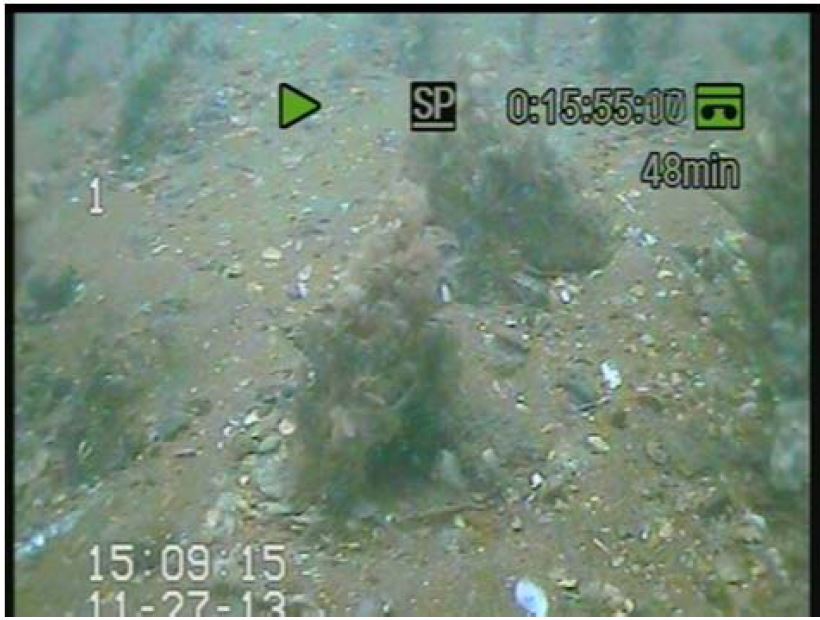|
|
Subtidal other algaeShort descriptionSubtidal algae not differentiated by structural type. Disclaimer: Ecosystem type descriptions are based on biophysical attributes identified in Central Queensland through expert advice and supported by scientific literature. Not all ecosystem types are mapped based on current inventory, and many of the ecosystems described here may also occur in other parts of Queensland.
Classification categoriesSelect from the links below to view related ecosystem type categories Long descriptionSubtidal algae not differentiated by structural type. The different groups of algae are not closely related and range from single cell forms to multicellular large complex forms also known as ‘seaweeds’. Refer to subtidal algae types for specific descriptive information applying to the various structural forms of algae, i.e. calcareous (type 54) and macrophytic (type 55) seaweeds, encrusting (type 58) and turf (type 59) algae. In general, all algal ecosystems take up nutrients, such as nitrogen and phosphorous, and their presence can indicate high levels of these. These are key nutrients identified as impacting on receiving waters, addressed in water quality plans for the Great Barrier Reef, including the Wetlands in the Great Barrier Reef Catchments Management Strategy 2016-21: ‘Wetlands can play an important role in improving water quality by trapping and transforming pollutants such as nutrients, sediments and pesticides’. Certain algae are associated with nuisance. The cyanobacteria or blue-green algae are encrusting and can form mats or be filamentous, and are ephemeral in their growth and recurrence. Algae are colonisers of bare substrates, including coral reefs post bleaching or other mortality events. Typically, succession is from bare space to microalgal film, to filamentous turf algae and crustose coralline algae, to erect macrophyte and erect calcareous algae[2]. Special valuesMacroalgae provide a major food source, cover and nurseries for herbivorous fish and other species[3]. Sargassum beds on coral reefs are intermittently and seasonally either tall or short in structure. The tall structure provides three-dimensional space for understorey algae and for fish to shelter, followed by short structure created by storms and cyclones detaching the canopy, washing it up onto the shore as debris (wrack)[3]. The kelp Ecklonia radiata is a canopy-forming brown alga that is a keystone species of temperate reefs in Australia, New Zealand and South Africa[1]. Kelp beds are at their northern limit in Queensland waters where they only occur in deeper waters[6]. Calcareous (type 54) and encrusting (type 58) algae contribute to calcium deposition on the sea floor. After death, eroded fragments add to the calcium content of unconsolidated sediments such as white sandy beaches and reef lagoons. The calcium carbonate is deposited as aragonite, calcite and high magnesium calcite in the algal tissues[2]. The Halimeda segments accumulate in bank-like, mound-like or reticular structures (up to 20 metres thick) over thousands of years[5]. Unique deep water banks of Halimeda spp. exist as very large, ancient structural ecosystems on the northern Great Barrier Reef, known as bioherms, where they are exposed to tidal currents and upwellings that transport nutrient-rich water over the continental shelf. These bioherms have ecosystem value in terms of biodiversity and nursery refugia and preserve high resolution records of palaeoclimate and palaeoceanography[5]. Crustose coralline algae is an important precursor coloniser of substrate which induces coral settlement. Rhodoliths are carbonate fixers which provide a consolidated substrate for the attachment of other biota, and may be very long lived over thousands of years. Diagnostic attributesInundation 'Subtidal' Structural macrobiota 'Algae – other or undifferentiated' QualifiersAlthough unmapped, Period and Trend qualifiers are relevant as algal growth can be ephemeral, forming ‘blooms’ often of seasonal cyclic pattern. Blooms can also be related to nutrient pollutants. DistributionAlgae is found throughout Queensland waters. For example Lyngbya spp. is a harmful blue-green algae that can occur intertidally and subtidally as algal blooms, irritating skin and breathing and is known from Moreton Bay. Hincksia sordida is a non‐toxic filamentous brown algae known to periodically occur from Fraser Island and Hervey Bay south to the Sunshine Coast, growing on areas such as seagrass beds fluctuating in their growth in response to nitrogen availability[4]. CommentsSubtidal algae are highly variable in their growth patterns and for this reason these ecosystems are difficult to map. Additional InformationSaltmarshes, seagrasses and algae - Queensland Department of Primary Industries Algae and algae blooms - Queensland Government Harmful algae - Queensland Government References
Last updated: 19 July 2019 This page should be cited as: Department of Environment, Science and Innovation, Queensland (2019) Subtidal other algae, WetlandInfo website, accessed 8 May 2025. Available at: https://wetlandinfo.des.qld.gov.au/wetlands/ecology/aquatic-ecosystems-natural/estuarine-marine/descriptions/61/ |

 — Department of the Environment, Tourism, Science and Innovation
— Department of the Environment, Tourism, Science and Innovation


